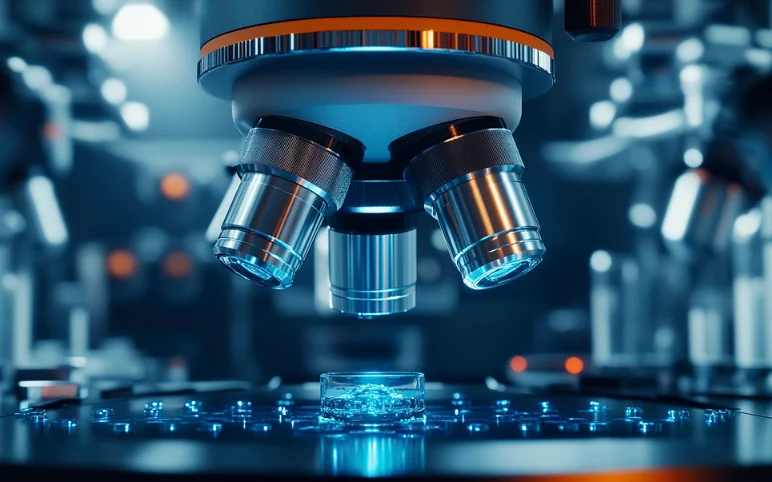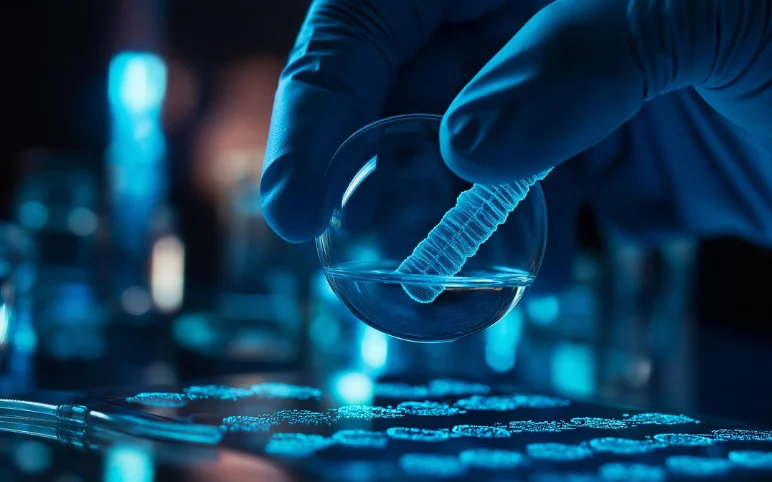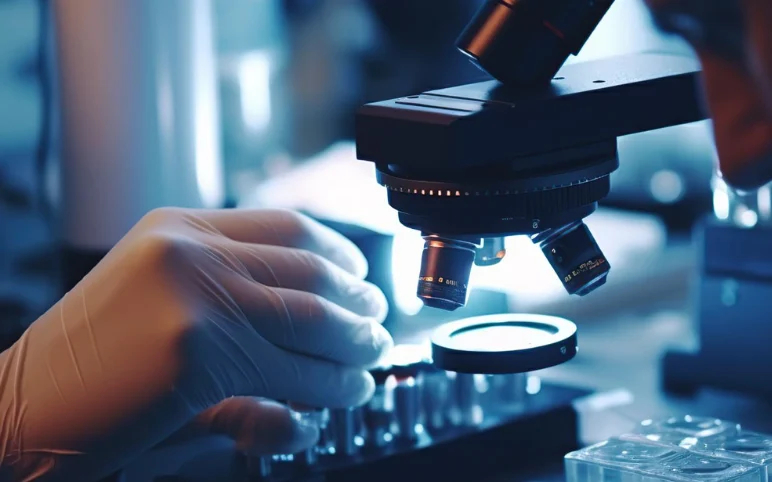PAVmed Entered into a Partnership with Novosound for Ultrasound Imaging Technology
On December 22, 2022, PAVmed Inc., a diversified commercial-stage medical technology company, operating in the medical device, diagnostics, and digital health sectors, announced that the company has entered into a partnership with Novosound Ltd., a venture-backed technology company based in Glasgow, Scotland.
The partnership is done to explore Novosound’s proprietary flexible thin-film ultrasound technology in medical imaging, initially targeting next-generation intravascular ultrasound (IVUS) imaging. Under this agreement, PAVmed and Novosound will work together on a joint research and development project to demonstrate Novosound’s proprietary technology. This technology can be incorporated into an intravascular ultrasound (IVUS) catheter, producing cross-sectional images of vascular structures using high-resolution, low-cost, miniaturized ultrasound two-dimensional arrays without the mechanical rotation of sensors that IVUS catheters have traditionally required.
Also, PAVmed will have the option to license Novosound’s technology for use in the commercialization of intravascular imaging products if certain development milestones are met. The target specifications include orders of magnitude improvements in image resolution and sensor manufacturing costs, potentially allowing for a disposable product.
PAVmed and Novosound already have an active partnership that seeks to apply Novosound’s ultrasound technology to PAVmed’s CarpX® Minimally Invasive Device for Carpal Tunnel Syndrome.
“Nearly all of the advances in ultrasound imaging technology over the past several decades have focused on leveraging an explosion of computational power for digital image processing, along with novel configurations of otherwise decades-old, rigid, machined ceramic, piezoelectric sensors,” said Lishan Aklog, M.D., PAVmed’s Chairman and Chief Executive Officer. Dr. Aklog, also said, “The Novosound team has developed groundbreaking technology whereby the piezoelectric material is lithographically ‘printed’ on a flexible thin-film substrate and has proven the technology’s applicability in a commercially successful industrial application.”
“We believe Novosound’s technology, which overcomes many of the limitations of conventional ultrasound, including the cost of high-frequency, high-resolution imaging, has the potential to be a once-in-a-generation breakthrough in ultrasonic medical imaging,” Dr. Aklog added. “We are excited to join forces with Novosound to explore applying their technology in medical imaging, initially targeting the intravascular ultrasound catheter market. This partnership is a testament to our ongoing commitment to seek out and make modest investments in innovative technologies with large market opportunities while continuing to drive commercialization of our Lucid and Veris product lines.”
Dave Hughes, Chief Executive Officer and co-founder of Novosound said, “The PAVmed team has a strong track record of innovation and delivering commercial-stage medical technologies.” Dave added, “They are the ideal partners for Novosound as we increasingly gain traction in the international healthcare sector.”
As per DelveInsight’s “Intravascular Ultrasound (IVUS) Market” report, the global intravascular ultrasound (IVUS) market is expected to grow owing to the rising demand for effective diagnostic cardiovascular imaging techniques due to a rise in the incidence of cardiovascular diseases (CVDs) across the globe. Further, the rising demand for minimally invasive surgical procedures, the increasing application of novel and enhanced digital technologies, and new product launches in the market among others, will thereby contribute to the growth of the intravascular ultrasound (IVUS) market during the forecast period from 2022-2027.
Johnson & Johnson Completed Acquisition of Abiomed
On December 22, 2022, Johnson & Johnson, the world’s largest, most diversified healthcare products company, completed the acquisition of Abiomed, a leading provider of groundbreaking medical technology that provides circulatory and oxygenation support.
Abiomed will now be a part of Johnson & Johnson and will operate as a standalone business within Johnson & Johnson’s MedTech segment.
Johnson & Johnson’s tender offer for all outstanding shares of Abiomed for an upfront payment of USD 380.00 per share in cash, corresponding to an enterprise value of approximately USD 16.6 billion, which includes cash acquired. Further, Abiomed shareholders will also receive a non-tradeable contingent value right entitling the holder to receive up to USD 35.00 per share in cash.
All of the conditions of the tender offer were satisfied. Also, Athos Merger Sub, Inc., a wholly-owned subsidiary of Johnson & Johnson, accepted for payment, and will as promptly as practicable pay for, all shares validly tendered and not properly withdrawn in the tender offer.
The acquisition was completed through a merger of Purchaser with and into Abiomed under Section 251(h) of the General Corporation Law of the State of Delaware without a vote of Abiomed stockholders.
In connection with the merger, shares of Abiomed that were not tendered in the tender offer were acquired by Johnson & Johnson and converted into the right to receive $380.00 per share in cash plus a CVR. In connection with the completion of the transaction, Abiomed’s common stock ceased trading on NASDAQ.
“We are excited to officially welcome the talented Abiomed team to Johnson & Johnson. Their patient-first philosophy aligns with Our Credo and Our Purpose to change the future of health for humanity,” said Joaquin Duato, Chief Executive Officer of Johnson & Johnson. Joaquin Duato added, “This acquisition marks another important step on Johnson & Johnson’s path to accelerating growth in our MedTech business and delivering innovative medical technologies to more people around the world.”
Ashley McEvoy, Executive Vice President and Worldwide Chairman of MedTech at Johnson & Johnson, said, “The completion of this acquisition allows Johnson & Johnson MedTech to expand our portfolio in the high-growth cardiovascular markets, adding solutions for heart recovery to our global market-leading Biosense Webster electrophysiology business. Fuelled by Johnson & Johnson’s global scale and commercial and clinical strength, we are excited to explore the opportunities and possibilities ahead to reach even more patients with critical unmet needs.”
According to DelveInsight’s “Heart Pump Devices Market” report, the global heart pump devices market was valued at USD 2.73 billion in 2021, growing at a CAGR of 15.16% during the forecast period from 2022 to 2027, to reach USD 6.35 billion by 2027. The heart pump devices market is estimated to register positive revenue growth, primarily owing to the rising prevalence of various cardiovascular disorders across the globe. Further, the rising burden of a sedentary lifestyle, and the growing aging population base prone to cardiovascular diseases, among others, are anticipated to bolster the market, thereby contributing to the growth of the heart pump devices market during the forecast period from 2022-2027. According to Delveinsight analysis, North America is expected to have the fastest growth in revenue in the overall heart pump devices market during the forecast period. This is due to the factors such as the increasing prevalence of cardiovascular diseases in the region, the growing geriatric population, rising product approvals and launches, rising adoption of these devices, the presence of a favorable reimbursement system, and others that are expected to aid in the growth of the North America heart pump devices market.
Sysmex Received Manufacturing and Marketing Approval for an Assay Kit to Identify Amyloid Beta (Aβ) Accumulation in the Brain
On December 19, 2022, Sysmex Corporation, a Japanese company headquartered in Kobe that is engaged in the healthcare business, received manufacturing and marketing approval in Japan for the HISCL β-Amyloid 1-42 Assay Kit and the HISCL β-Amyloid 1-40 Assay Kit, as in vitro diagnostics to measure amyloid beta (Aβ) in the blood.
By measuring Aβ levels in the blood using the company’s automated immunoassay system HISCL-5000/HISCL-800, the product aids in identifying Aβ accumulation in the brain, which is a feature of Alzheimer’s disease. The newly approved product aids in determining the level of Aβ accumulation in the brain by measuring the ratio of Aβ peptides in the blood with Sysmex’s HISCL-Series, which uses chemiluminescence enzyme immunoassay (CLEIA) as its measurement principle.
The company is preparing for market entry in Japan as soon as possible to provide patients with access to this minimally invasive and simple test.
Unlike traditional testing methods, the product allows for blood testing, which reduces the physical, emotional, and financial burden on patients with suspected Aβ accumulation in the brain. Furthermore, the product is expected to aid in the early diagnosis of patients and the early determination of optimal treatment plans. Furthermore, automated assays based on the HISCL-Series will help improve testing efficiency and standardization by requiring only 10 to 30 L of blood (plasma) and a measuring time of only 17 minutes.
According to DelveInsight’s “In Vitro Diagnostics Market” report, the global in vitro diagnostics market was valued at USD 71.01 billion in 2021, growing at a CAGR of 4.71% during the forecast period from 2022 to 2027, to reach USD 93.60 billion by 2027. The in vitro diagnostics market is estimated to register positive revenue growth owing to factors such as the rising incidence of infectious diseases such as Covid-19, HIV, Herpes, and others. Further, the rising prevalence of cancers, rapid technological advancements, increasing demand for point-of-care diagnostics along with rising consumer awareness regarding quick diagnosis, among others, are anticipated to bolster the market, thereby contributing to the growth of the in vitro diagnostics market during the forecast period from 2022-2027.
According to Delveinsight analysis, North America is expected to have the fastest growth in revenue in the overall in vitro diagnostic market during the forecast period. This is due to the factors such as the increasing burden of infectious diseases, the increasing number of cancer patients, the growing geriatric population in the region, rising product approvals and launches, the presence of a favorable reimbursement system, the presence of key players, and growing demand of point-of-care diagnosis are expected to aid in the growth of North America in vitro diagnostic market.
SI-BONE Announced FDA Clearance for Expanded Rod Compatibility with the iFuse Bedrock Granite® Implant System
On December 27, 2022, SI-BONE, Inc., a Silicon Valley-based medical device company dedicated to solving musculoskeletal disorders of the sacropelvic anatomy, received an additional FDA clearance for iFuse Bedrock Granite.
The implant is commonly used to immobilize and fuse the sacroiliac (SI) joint as well as to provide foundational support at the base of a spine fusion construct. The implant can be used with a variety of rods commonly used in multilevel spine fusion surgeries.
Now, the surgeons will be able to confidently use their preferred techniques and implant systems in conjunction with iFuse Bedrock Granite as the foundation for their construction.
“Many patients with spinal deformity require a thorough surgical plan and a variety of implant solutions to help provide the best outcome,” said Robert Eastlack, MD, Orthopedic Surgeon, Scripps Hospital. Robert added, “By using iFuse Bedrock Granite at the base of my spinal constructs, I am providing my patients with the most advanced technology available.”
Laura Francis, CEO of SI-BONE, said, “Since launch, Granite has become the preferred implant for surgeons as they incorporate SI joint fusion into their pelvic fixation constructs.” Laura also commented, “We believe that this expanded clearance will help increase the number of surgeons who treat their patients with this breakthrough device.”
According to DelveInsight’s “Spinal Implants Market” report, the global spinal implants market was valued at USD 13.01 billion in 2021, growing at a CAGR of 5.40% during the forecast period from 2022 to 2027, to reach USD 17.84 billion by 2027. The increase in the demand for spinal implants is predominantly attributed to the spike in the population suffering from various spinal diseases such as spinal stenosis, disc herniation, and degenerative disc diseases.
Further, the shifting focus towards developing technologically advanced products such as bone graft products, the rising geriatric population base prone to spinal damage and associated diseases, favorable reimbursement scenarios, rising demand for minimally invasive products, and other factors are anticipated to drive the global spinal implants market during the forthcoming years.
EOFlow Submitted Application to the United States FDA for its Wearable Insulin Pump ‘EOPatch’
On December 27, 2022, EOFlow Co., Ltd., a provider of wearable drug delivery systems (DDS), announced that the company has submitted a 510(k) application to the US FDA for its wearable disposable insulin pump, EOPatch.
EOPatch is a wearable insulin pump system, with a thin and light disposable pump unit, and a smart-phone like color touchscreen controller together with advanced managing software tools. The patch is an external insulin injection device that automatically injects insulin from outside the body to control blood glucose levels for the treatment of diabetes.
The company officially launched EOPatch in Europe in September 2022 with the U.A.E. approval obtained in September 2022, and Indonesia approval in October 2022.
EOFlow’s founder and CEO, Mr. Jesse J. Kim said, “I am very proud to begin the US clearance process. With this submission, we have taken a major step forward in entering the world’s largest diabetes market. Furthermore, as the 510(k) device shares a common backplane with all EOFlow products, this submission is an important step in our efforts to commercialize extended wear and closed loop systems in the US.”
According to DelveInsight’s “Insulin Infusion Pump Market” report, the global insulin infusion pump devices market was valued at USD 6.48 billion in 2021, growing at a CAGR of 8.69% during the forecast period from 2022 to 2027 to reach USD 10.68 billion by 2027. The rise in demand for insulin infusion pumps is mainly attributed to the increasing prevalence of diabetes across the globe. Further, the rising elderly population base prone to diabetes, rising technological advancements, and growing focus on improving the safety and usability of insulin infusion pumps, among others, are anticipated to propel the market of insulin infusion pumps.
As per Delveinsight analysis, in the by product segment of the insulin infusion pump, the patch pump category is projected to register a significant growth in the revenue for the insulin infusion pump market during the forecast period from 2022 to 2027. This is due to the advantages associated with the patch pump. The patch pump offer advantages such as small size, simple design, tubeless design, and others. Moreover, the availability of patch pumps in different sizes, and shapes will also aid in higher demand for the patch pump.
Icecure Presented Interim Study Results for its ProSense System, a Cryoablation Therapy
On December 19, 2022, IceCure Medical Ltd., a developer of minimally-invasive cryoablation technology, the ProSense® System that destroys tumors by freezing, released interim results from the ICESECRET study for the treatment of patients with small renal masses who cannot be offered kidney-preserving surgery.
ICESECRET is a prospective, multicenter, single-arm clinical trial led by Prof. Halahmi Sarel at Bnai-Zion Medical Center in Haifa, Israel, and Shamir Medical Center in Zerifin, Israel.
The trial included 115 patients who were treated with ProSense cryoablation under CT guidance for localized SRM of 5 cm. About 96% of the procedures were reported with no anatomical limitation, full engulfment of the renal lesion was achieved, including a safety margin of 0.5 cm. During the trial, follow-up visits were scheduled for six weeks, six months, one year, and then annually for the next five years following the procedure.
In the trial, the data on local recurrence based on CT imaging is collected during follow-up visits. Throughout the study, safety was determined by tracking procedure-related adverse events.
As per the interim results, out of the 115 patients enrolled, 107 patients (112 lesions) returned for follow-up with a mean duration of 22.8 months and a range of 12-60 months.
- In a subgroup of patients with no previous history of kidney cancer on the same kidney and a lesion ≤3 cm, an 89.5% recurrence-free rate was observed at a mean follow-up time of 22.2 months when the procedure protocol was followed.
- The recurrence-free rate was 85.1% for the 107 patients (91 patients, including 13 patients who underwent a second cryoablation), at a mean follow-up period of 16.5 months.
- 5 serious adverse events were reported, 4 of which were of mild severity and were treated conservatively and resolved within 1-5 days, with one severe complication of a new onset of ipsilateral hydronephrosis 7 months after the cryoablation procedure that led to nephrectomy.
- Cryoablation time and hospitalization time were relatively short, up to approximately 25 minutes and 2 days, respectively.
- Based on these interim results, cryoablation is safe and effective for treating renal masses under 5 cm.
“These impressive interim results demonstrate the value of ProSense for urologists and interventional radiologists as a therapeutic alternative when patients are not eligible for surgery,” stated IceCure’s Chief Executive Officer, Eyal Shamir. Eyal added, “We believe the findings will support further use of ProSense in the jurisdictions in which our cryoablation system is approved for use with benign and malignant tissues of the kidney. The growing body of data on ProSense’s efficacy and safety across a broad range of indications supports commercialization momentum, particularly in facilities that benefit from one device that can be used across multiple specialties.”
According to DelveInsight’s “Cryotherapy Market” report, the global cryotherapy market was valued at USD 258.17 million in 2021, growing at a CAGR of 8.01% during the forecast period from 2022 to 2027, to reach USD 408.44 million by 2027. Factors such as the increasing prevalence of chronic diseases such as cancer, neurological diseases, bone diseases, and others, increasing demand for healthy skin, rise in sports and other injuries, and the growing focus on improving the safety and usability of cryotherapy for end users among others are further expected to result in the appreciable revenue growth in the cryotherapy market during the forecast period (2022-2027). Further, rising technological advancements, an increasing geriatric population prone to chronic diseases, and others are expected to drive the overall cryotherapy market during the forecast period of 2022-2027. Further, according to the Delveinsight analysis, North America is expected to have the fastest growth in revenue in the overall cryotherapy market during the forecast period. This can be ascribed to the presence of a large patient pool associated with cancer and skin diseases, a highly potent market in terms of product development and launches, and the local presence of key market players, among other factors in the region.



